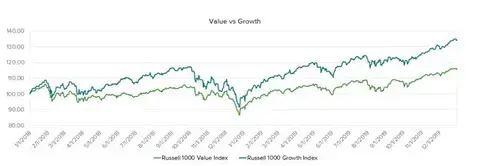As we close 2019, many investors in a diversified portfolio find themselves with an account balance significantly above the close of 2018, especially with no withdrawals. But can we leave our portfolios on automatic pilot?
As planners, many of us do not spend time worrying about bear markets for our clients. We are working with the client’s income streams, annual expenses, a living expense cash bucket, risk tolerance, and then projecting the long-term rate of return that particular client needs from their assets. Once we know that rate of return, and with the clients risk tolerance in mind, we develop a portfolio based on long-term asset class returns to achieve the client’s goals.
That being said, we do see issues with a U.S.-centric stock and bond portfolio over the next decade. Looking at forecasts from Research Affiliates, GMO, and W. Blair, the projections for U.S. stocks and bonds are in the low single digits.
Reading that may leave you scratching your head after an S&;P 500 return of 31.48% for 2019, but storm clouds are gathering. Consider the following:
- Consumer debt (not counting mortgages) has climbed to $4 trillion. That figure is higher than it’s ever been, even after adjusting for inflation.
- The same report also indicates that while mortgage debt slid after the financial crisis a decade ago, its rebounding now.
- According to data published by the U.S. Department of Education, outstanding student loan debt totaled about $1.5 trillion last year, exceeding all other forms of consumer debt except mortgages.
- Auto debt is up nearly 40% adjusting for inflation in the last decade to $1.3 trillion. And the average loan for new cars is up an inflation-adjusted 11% in a decade, to $32,187, according to an analysis of data from credit-reporting firm Experian.
- In October, it was reported that car loan terms have moved from five years to seven, and that consumers are rolling debt balances from their old cars into their new car purchase.
Against this backdrop, can we expect the consumer to keep driving the economy?
Moving to the markets, consider the comments from Bill Gross on the low interest rate environment: “But artificially low interest rates destroy the savings function so necessary for capital to be invested in the real economy. Pension funds, insurance companies and any financed-based structure with long term liabilities are slowly being strangled because they cannot earn their assumed return. The same goes for mom and pop savers, as they struggle to earn for retirement.”
Consider the role of tech stocks in the U.S. market, they have driven U.S. growth stocks to outperform value stocks since the beginning of 2018. In 2019, the tech sector was responsible for 31% of the gain in the S&;P 500, nearly half of that came from Apple and Microsoft. Can this very crowded trade continue to work for investors?

Source: Morningstar. Past performance does not guarantee future results. An investment cannot be made directly into an index. Unmanaged index returns do not reflect fees, expanses or sales charges. Index performance is not indicative of the performance of any investment.
Finally, in 2019, more than a third of S&;P 500 companies have posted a year-over-year decline in earnings. In 2009, 2008 and 2002 in this type of environment, the stock market experienced market declines. So, if you have a U.S.-centric stock and bond portfolio now is the time to consider a more broadly diversified approach.
Trouble ahead, indeed. Looking at the historical analysis of the markets and what that could mean for your financial plan can be complicated. If you need help navigating your retirement against this view of the next decade, contact a financial advisor. Our team of specialists can help develop an action plan to put you on track toward your financial goals.
There is no guarantee that a diversified portfolio will enhance overall returns or out-perform a non-diversified portfolio. Diversification does not protect against market risk.
